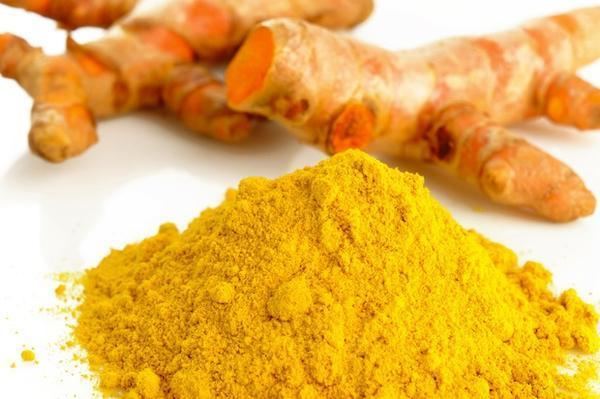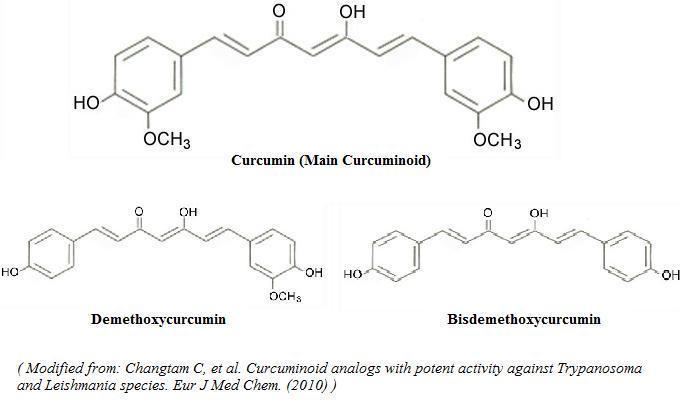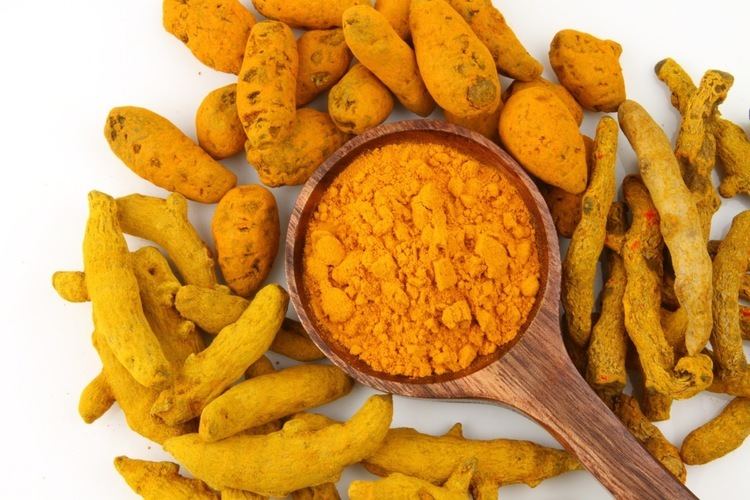Formula C21H20O6 Melting point 183 °C | Molar mass 368.38 g/mol | |
 | ||
IUPAC ID (1E,6E)-1,7-bis (4-hydroxy- 3-methoxyphenyl) -1,6- heptadiene-3,5-dione Appearance Bright yellow-orange powder | ||
Alchepharma tumeric featuring sabinsa s c3 curcumin complex
Curcumin (/ˈkərkjuːmən/, diferuloylmethane) is a bright yellow chemical produced by some plants. It is the principal curcuminoid of turmeric (Curcuma longa), a member of the ginger family (Zingiberaceae). It is sold as an herbal supplement, cosmetics ingredient, food flavoring, and food coloring. As a food additive, its E number is E100.
Contents
- Alchepharma tumeric featuring sabinsa s c3 curcumin complex
- Food additive and supplement
- Chemistry
- Biosynthesis
- Pharmacodynamics
- Pharmacokinetics
- Research
- References

It was isolated in 1815 when Vogel and Pelletier reported the isolation of a "yellow coloring-matter" from the rhizomes of turmeric and named it curcumin. Although curcumin has been used historically in Ayurvedic medicine, its potential medicinal properties remain unproven and are an area of active investigation.

Chemically, curcumin is a diarylheptanoid, belonging to the group of curcuminoids, which are natural phenols responsible for turmeric's yellow color. It is a tautomeric compound existing in enolic form in organic solvents and as a keto form in water.

Food additive and supplement

The most common applications are as a dietary supplement, in cosmetics, as a food coloring, and as flavoring for foods such as turmeric-flavored beverages (Japan).

Annual sales of curcumin have increased since 2012, largely due to an increase in its popularity as a dietary supplement. It is increasingly popular in skin care products that are marketed as containing natural ingredients or dyes, especially in Asia. The largest market is in North America, where sales exceeded US$20 million in 2014.
Chemistry
Curcumin incorporates several functional groups whose structure was first identified in 1910. The aromatic ring systems, which are phenols, are connected by two α,β-unsaturated carbonyl groups. The diketones form stable enols and are readily deprotonated to form enolates; the α,β-unsaturated carbonyl group is a good Michael acceptor and undergoes nucleophilic addition.
Curcumin is used as an indicator for boron. It reacts with boric acid to form a red-color compound, rosocyanine.
Biosynthesis
The biosynthetic route of curcumin is uncertain. In 1973, Roughly and Whiting proposed two mechanisms for curcumin biosynthesis. The first mechanism involves a chain extension reaction by cinnamic acid and 5 malonyl-CoA molecules that eventually arylized into a curcuminoid. The second mechanism involves two cinnamate units coupled together by malonyl-CoA. Both use cinnamic acid as their starting point, which is derived from the amino acid phenylalanine.
Plant biosyntheses starting with cinnamic acid is rare compared to the more common p-coumaric acid. Only a few identified compounds, such as anigorufone and pinosylvin, build from cinnamic acid.
Pharmacodynamics
In vitro, curcumin has been shown to inhibit certain epigenetic enzymes (the histone deacetylases: HDAC1, HDAC3, HDAC8), and transcriptional co-activator proteins (the p300 histone acetyltransferase). Curcumin also inhibits the arachidonate 5-lipoxygenase enzyme in vitro.
Pharmacokinetics
In Phase I clinical trials, dietary curcumin was shown to exhibit poor bioavailability, exhibited by rapid metabolism, low levels in plasma and tissues, and extensive rapid excretion, factors that make its in vivo activity poorly understood. Potential factors that limit the bioavailability of curcumin include insolubility in water (more soluble in alkaline solutions) and non-absorption. Numerous approaches to increase curcumin bioavailability are under research, including the use of absorption factors (such as piperine), liposomes, a structural analogue, or nanomaterials using specialized polymers.
Research
Curcumin, which shows positive results in most drug discovery assays, may be a false lead that medicinal chemists refer to as "pan-assay interference compounds". Although curcumin has been assessed in numerous laboratory and clinical studies, it has no medical uses established by well-designed clinical research.
Two preliminary clinical studies in cancer patients consuming high doses of curcumin (up to 8 grams per day for 3–4 months) showed no toxicity, though some subjects reported mild nausea or diarrhea. Curcumin appears to reduce circulating C-reactive protein in human subjects, although no dose-response relationship was established.
Cancer studies using curcumin conducted by Bharat Aggarwal, formerly a researcher at the MD Anderson Cancer Center, were deemed fraudulent and subsequently retracted by the publisher.
